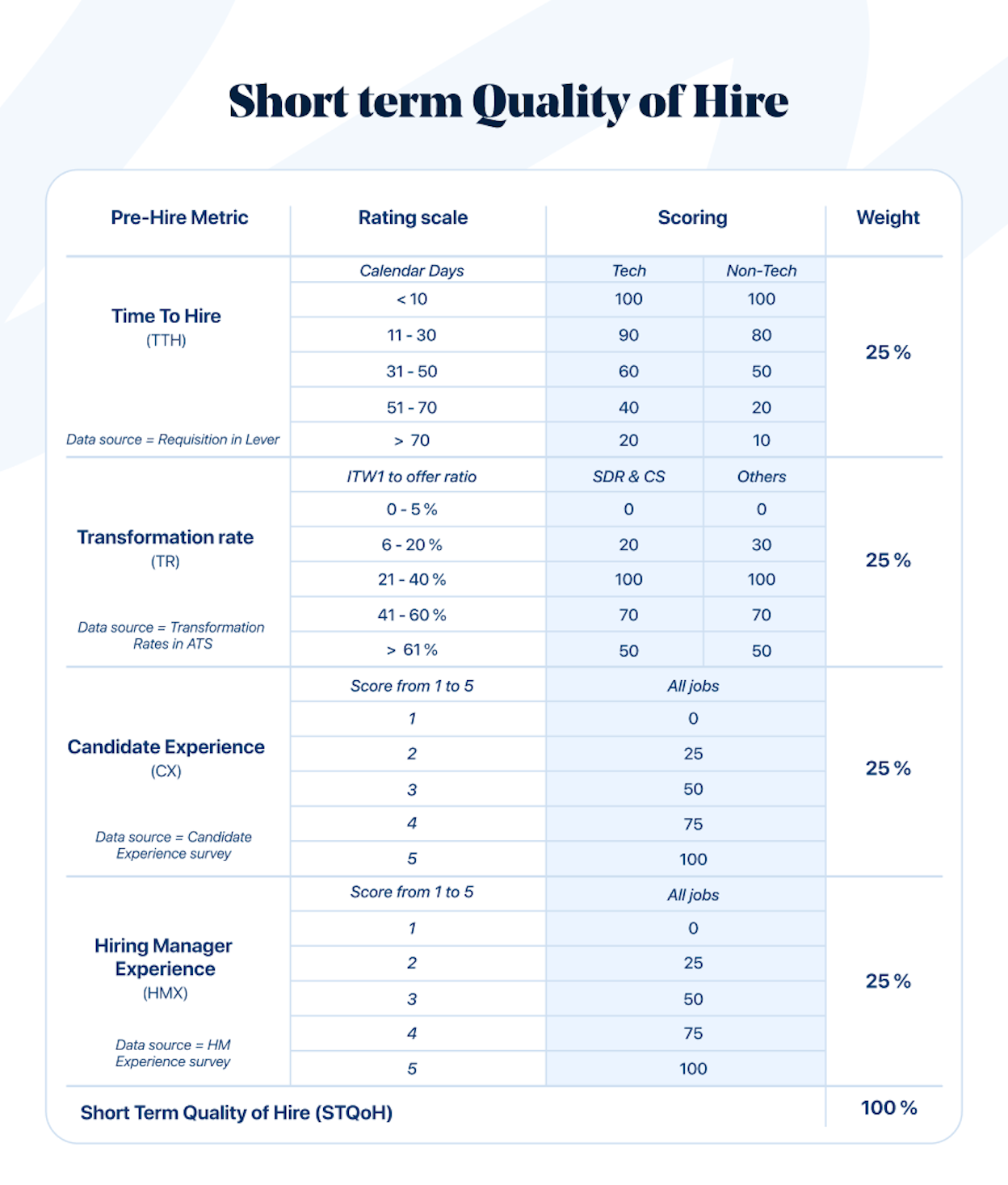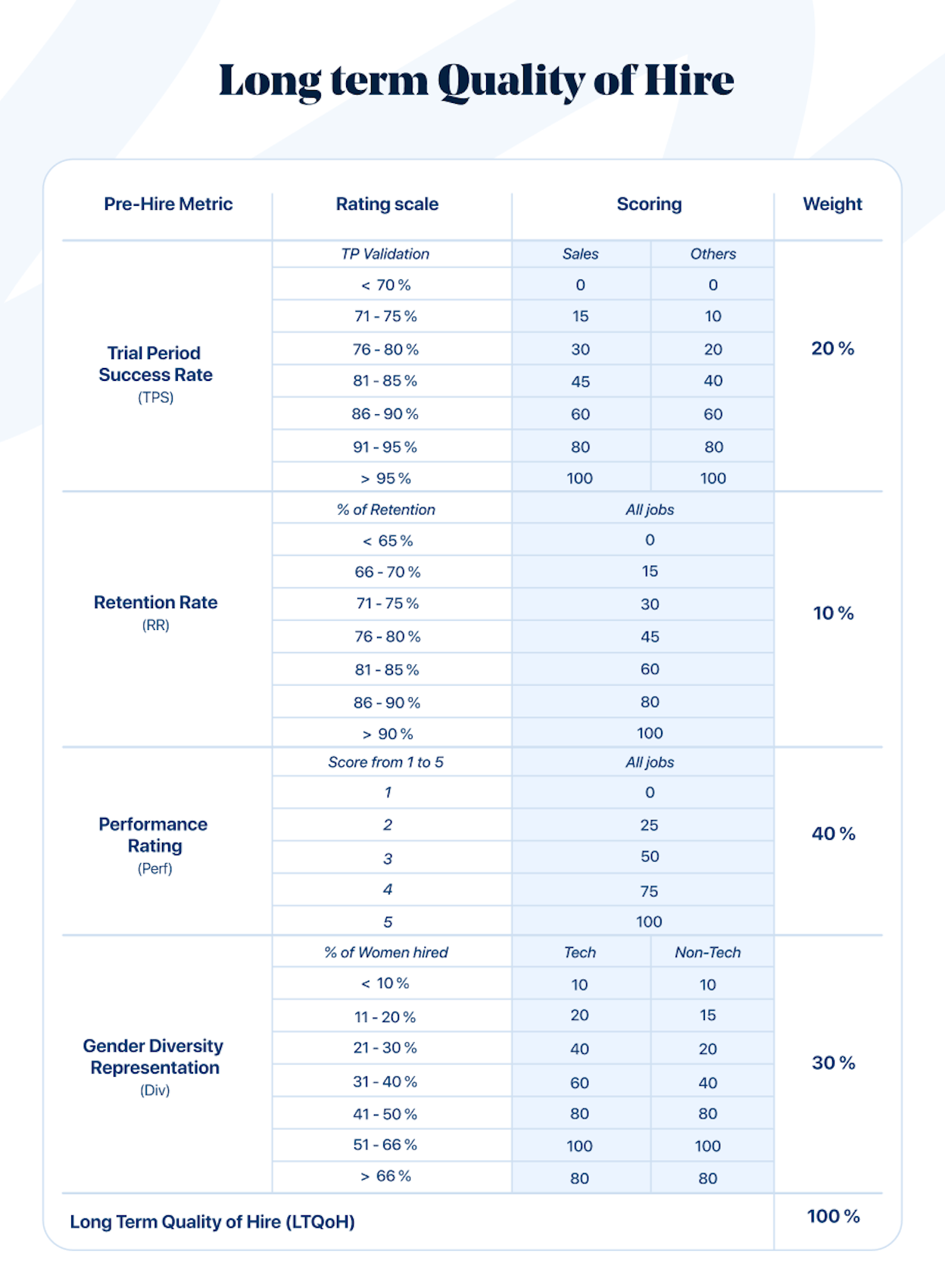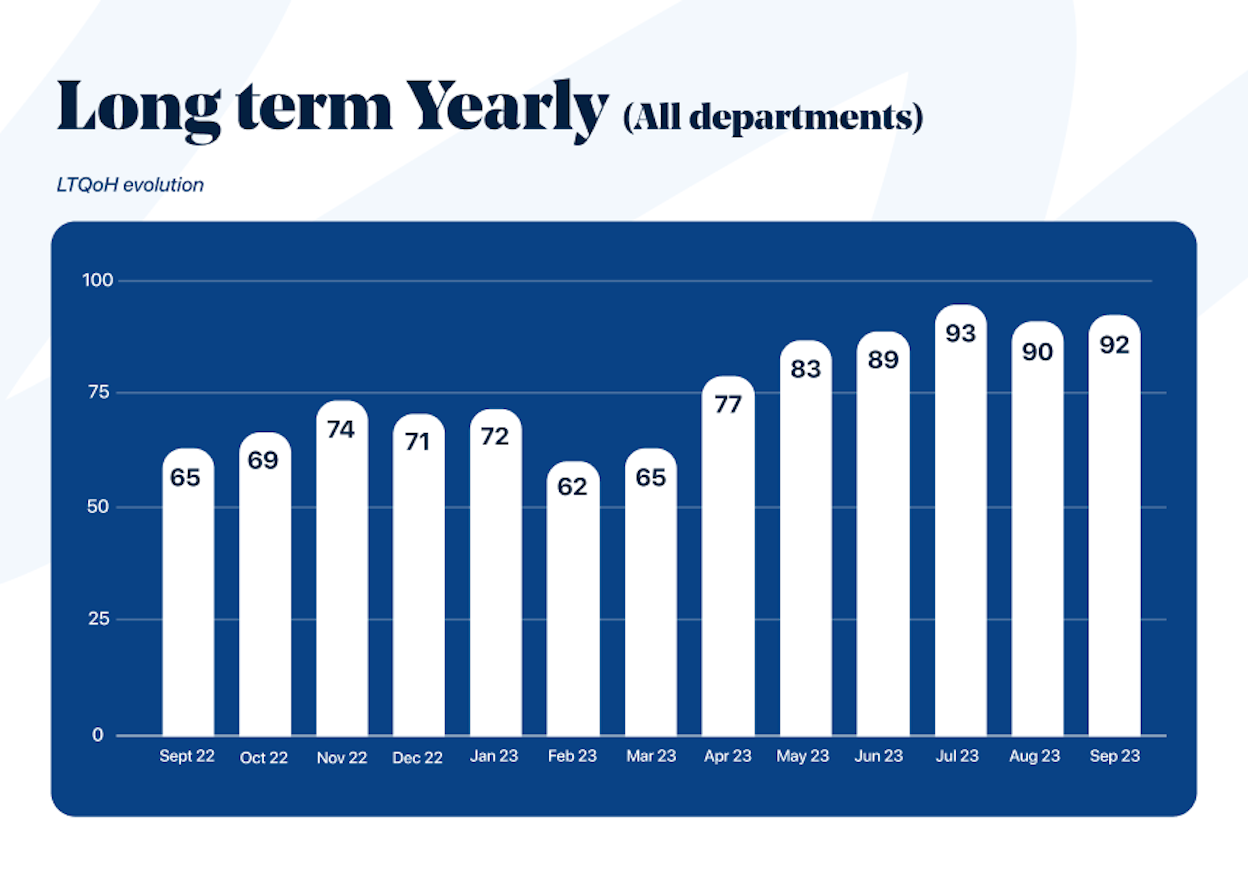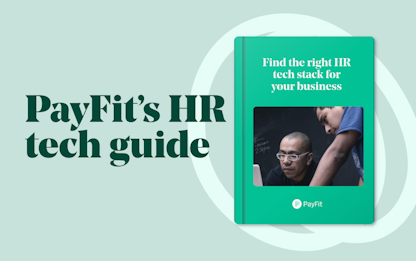- Blog
- |People management
- >Employee wellbeing
- >unleashing the power of quality of hire
Unleashing the power of quality of hire


In the battle for great talent - and in a context where companies are looking for specific profiles to accompany them on their growth or transformational journey - finding the right metrics to ensure Talent Acquisition rightly contributes to these efforts is critical. Our main objective at PayFit this past semester was to continuously improve our methodology in order to adapt to the scaleup world economic context and challenges, which was (and still likely will be) paved with accelerations and unpredictable slow-downs.
Here were the main challenges we wanted to tackle:
How can we use data to improve the efficiency of our Talent Acquisition engine?
How can we ensure that our hiring aligns strategically with our company's goals and values?
In order to answer these questions, we created a working group amongst the Talent Acquisition and People Operations teams to design and implement one key indicator, a composite metric, that we would monitor closely over time: the quality of hire. Let’s discover how this metric not only ensures smart hiring but also fuels performance of the Talent Acquisition engine.
Defining quality of hire
Despite its importance, there is paradoxically no consensus in the industry on the one metric that would allow to measure the Quality of Hire. One reason for this absence of consensus is that the Quality of Hire actually covers multiple dimensions: from hiring process to retention and performance over time.
With this reality in mind, we found out that we could not build one single meaningful metric and decided to create two metrics: the short term quality of hire focus would allow companies to monitor the efficiency of their hiring process, while the long term quality of hire captures new hire mid-term contribution in the company.
Although the methodology to track the quality of hire can be easily replicated; it is important to note that this is a made-to-measure approach depending on the current company development phase, long and short term goals, hiring plan etc..
So how did we develop this?
To measure both short and long term QoH, we started by defining the inputs that would compose each. The short term quality of hire (STQoH) is built based on four pre-hire metrics and is to be monitored at requisition level. The first two are common Talent Acquisition metrics available via most of the Applicant Tracking Systems (ATS):
- Time to Hire: as the time spent between approved requisition and the offer accepted.
- Transformation Rate: as the ratio between the 1st interaction with the candidate until the offer is accepted. The following two are metrics that we mostly capture aside from our ATS:
- Candidate Experience Score: we send out anonymous surveys to all candidates going through a process with us; we ask them to provide some feedback and rate their recruitment experience with us: from material received to prepare their interview, the support given by the TAs, ways the skills were assessed, feedback received, etc..
- Hiring Manager Experience Score: just like the candidate survey, we ask Hiring Managers to help us improve by providing us with feedback: from available candidate pool, to team reactivity and overall level of service.

On the other hand, the long term quality of hire (LTQoH) captures post-hire metrics and provides a wider view at department and company level over time..
- Trial Period Success Rate: as the % of employees validating trial period without extension.
- Retention Rate: as the % of employees still present in the company after x months.
- Performance Rate: as the performance of the employees as per their last performance ratings.
- Gender Diversity: as the % of women within our employees both at department and company level.

With those inputs in place, we then created scales for each input and finally allocated scores to each layer of the scales. In some cases where the data would differ significantly from one department to another, we adjusted our scoring systems to a more granular level in order to ensure a higher accuracy and representativeness of the data.
Here is an example of a comprehensive data overview on a 12-month period:

The computation results in one score for each short term and long term quality of hire. And, while the score is important, we acknowledge that it is largely dependent on both the scaling and scoring systems. We therefore pay more attention to the evolution of the score month over month, much more than the score in itself.
The power of data for your business
Overtime, the STQoH helps uncover areas of improvement of hiring processes and make it more efficient both for Talent Acquisition teams and hiring managers. At the same time, the LTQoH allows identifying outliers at department or company level that can be then used to coach managers and refine hiring briefings and scorecards.
When considering QoH, subjectivity is the challenge and measurement is the key. Standardisation lights the way, bringing clarity to recruitment metrics. Initiating QoH does require effort and collaboration, but once in place it does become your organisational edge. Of course, this metric has its limitations, as having accurate data requires discipline and homogeneous usage of your ATS or other surveys.
QoH reveals efficiency and recruiting impact and will be your best ally when taking important decisions for the company. Gathering data is one step, but analysing results and being able to extract relevant insights that can be transformed into concrete action plans is ultimately what will make this implementation a success.

The 2024 UK National Living Wage - An Employer’s Guide

The Cost Of Recruitment In The UK - What You Might Not Know

UK National Insurance Changes for January 2024

End Of Tax Year 2023/2024 - Eight Key Changes For 24/25

Strategies to Reduce Employee Turnover

